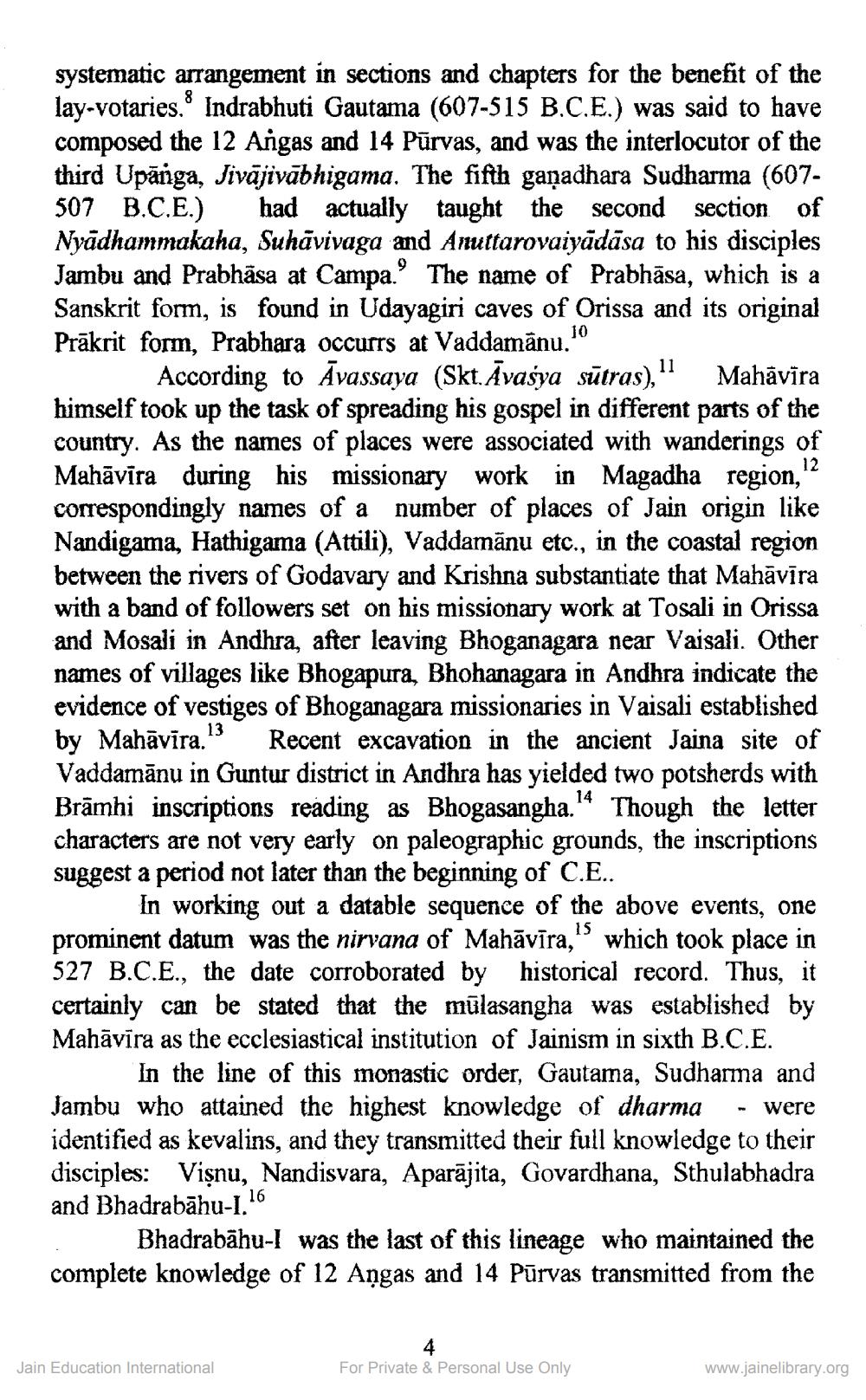________________
systematic arrangement in sections and chapters for the benefit of the lay-votaries. Indrabhuti Gautama (607-515 B.C.E.) was said to have composed the 12 Angas and 14 Pūrvas, and was the interlocutor of the third Upānga, Jivājivābhigama. The fifth gañadhara Sudharma (607507 B.C.E.) had actually taught the second section of Nyādhammakaha, Suhāvivaga and Anuttarovaiyādāsa to his disciples Jambu and Prabhāsa at Campa. The name of Prabhāsa, which is a Sanskrit form, is found in Udayagiri caves of Orissa and its original Prākrit form, Prabhara occurrs at Vaddamānu."
According to Āvassaya (Skt. Āvasya sūtras)," Mahāvīra himself took up the task of spreading his gospel in different parts of the country. As the names of places were associated with wanderings of Mahāvīra during his missionary work in Magadha region, correspondingly names of a number of places of Jain origin like Nandigama, Hathigama (Attili), Vaddamānu etc., in the coastal region between the rivers of Godavary and Krishna substantiate that Mahāvīra with a band of followers set on his missionary work at Tosali in Orissa and Mosali in Andhra, after leaving Bhoganagara near Vaisali. Other names of villages like Bhogapura, Bhohanagara in Andhra indicate the evidence of vestiges of Bhoganagara missionaries in Vaisali established by Mahāvīra. Recent excavation in the ancient Jaina site of Vaddamānu in Guntur district in Andhra has yielded two potsherds with Brāmhi inscriptions reading as Bhogasangha.4 Though the letter characters are not very early on paleographic grounds, the inscriptions suggest a period not later than the beginning of C.E..
In working out a datable sequence of the above events, one prominent datum was the nirvana of Mahāvīra," which took place in 527 B.C.E., the date corroborated by historical record. Thus, it certainly can be stated that the mūlasangha was established by Mahāvīra as the ecclesiastical institution of Jainism in sixth B.C.E.
In the line of this monastic order, Gautama, Sudharma and Jambu who attained the highest knowledge of dharma - were identified as kevalins, and they transmitted their full knowledge to their disciples: Vişnu, Nandisvara, Aparājita, Govardhana, Sthulabhadra and Bhadrabāhu-1.16
Bhadrabāhu-l was the last of this lineage who maintained the complete knowledge of 12 Angas and 14 Pūrvas transmitted from the
4
Jain Education International
For Private & Personal Use Only
www.jainelibrary.org




